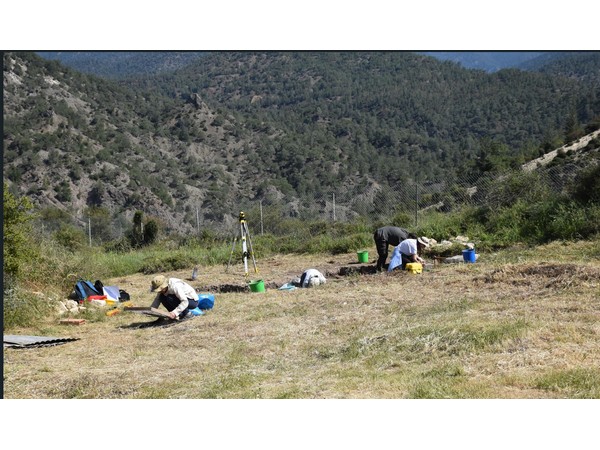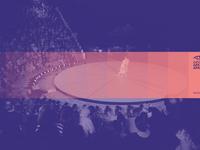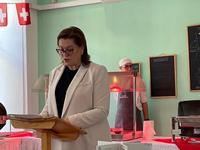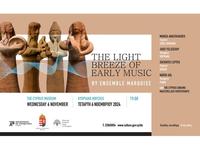Press Releases

19-07-2024 11:48
Kourion Urban Space Project: 2024 excavation season
The Department of Antiquities of the Deputy Ministry of Culture announces the completion of the 2024 final excavation season of the Kourion Urban Space Project (KUSP), under the direction of Dr Thomas W. Davis, Associate Director of the Lanier Centre for Archaeology at Lipscomb University, Dr Laura A. Swantek (Assistant Professor of Anthropology, Phoenix College), and Dr Lucas Grimsley (Lanier Centre for Archaeology, Lipscomb University). KUSP partners include the Australian Institute of Archaeology and the University of Cyprus.
During this season, the KUSP has concluded the excavation of Building 4, a large and highly decorated structure adjacent to the Earthquake House in the ancient city of Kourion. Building 4 was destroyed in the earthquakes of the mid-fourth century CE that devastated Kourion and other cities across the Mediterranean region. It is apparent from the deposit of broken artifacts and building stones found above Building 4 that it was never rebuilt following its destruction. Instead, it was further buried with debris from earthquake cleanup efforts when other parts of Kourion were cleared and rebuilt.
KUSP has excavated nine interior rooms in Building 4. Of note is an exterior facing room on the east side of the building that appears to have served as public space. Bordered by a large exterior wall with cisterns used to store fresh water, this room has a mosaic floor, marble-covered walls, and was once adorned with two marble statues. The mosaic floor is composed of white tesserae (tiles) bordered with two bands of black tesserae. Between these bands is a black criss-cross pattern separated by medallions. At the corners, the mosaic is decorated with geometric designs that include red and blue accent tesserae. One wall of this room was decorated with sheets of white marble at the bottom and different coloured marble above. When the earthquake that destroyed this building struck, most of the marble fell from the wall and broke as it landed on the floor.
In 2022, a marble statue of Harpocrates-Apollo was found in this room. This season, a marble statue of Apollo’s twin sister Artemis, dated to the fourth century CE, was found, completing the set of twins born out of a liaison between Zeus and Leto. Artemis is 80 cm tall and stands in an active posture with slightly bent knees and one foot forward. She wears a billowing tunic tied at the waist and strappy sandals. Her right arm reaches over her shoulder for a quiver of arrows, while her left arm holds her bow. She is accompanied by a dog crouching at her left knee. Traces of red paint are visible on Artemis’ lip, suggesting the statue was painted in vibrant colours when it was displayed in this room. It is apparent that the upper half of the bow between the left shoulder and the left hand of this statue was broken in three places in antiquity and mended using iron dowels and lead sheet.
The remains of four earthquake victims, likely fallen from a second story, were also found this season. Along with these individuals, three copper alloy coins minted in the fourth century and commemorating the reigns of two emperors, Constantius II and Valens, were found. The preserved remains of plain weave textile are adhered to two of these coins, suggesting they were once stored in a cloth bag or in the pocket of a garment. Also found in conjunction with the human remains were two iron and copper alloy keys and two lamps, one decorated with a prancing horse motif. The earthquake victims of Building 4 still wore their personal jewellery, including a pair of gold earrings with glass or rock crystal and pearl settings, and another complete pair of gold earrings with three dangling mother-of-pearl beads. A single gold earring decorated with a pinched loop or sailor’s chain was also found with one of the victims. Still clasped and encircling the neck of one victim was a gold and garnet bead necklace with a decorative clasp. The presence of lamps with the victims as well as personal items such as jewellery, a possible coin purse and keys may indicate that the earthquake struck in the evening before Kourion had gone to sleep for the night or in the early morning just as they were preparing for their day.
Below the tumbled wall stones of many of the rooms in Building 4, hundreds of fragments of painted wall plaster were also found. Black- and red-striped patterns adorned some rooms of Building 4, while other designs were more elaborate with swirling patterns in red, turquoise, blue, orange, black, brown and white. A fragment painted with the side of a human face including an eye, eyebrow and sideburns was found this season, indicating at least one room of Building 4 was decorated with a figural wall scene. Further analysis and reconstruction of the painted plaster in this room will give a better idea of the composition of this scene.
The excavation of Building 4 has given us a greater understanding of life at Kourion during the fourth century CE and the events of that fateful and devastating moment that ended the lives of many of its inhabitants and changed the character of the city. While the finds from the 2024 season of the Kourion Urban Space Project have been impressive, the remains of the earthquake victims speak the loudest of the human experience of living and dying in a Late Roman period city on Cyprus.
(IA/GS)
Relevant Press Releases


04-11-2024 13:18
Announcement by the Cyprus Academy of Sciences, Letters, and Arts





